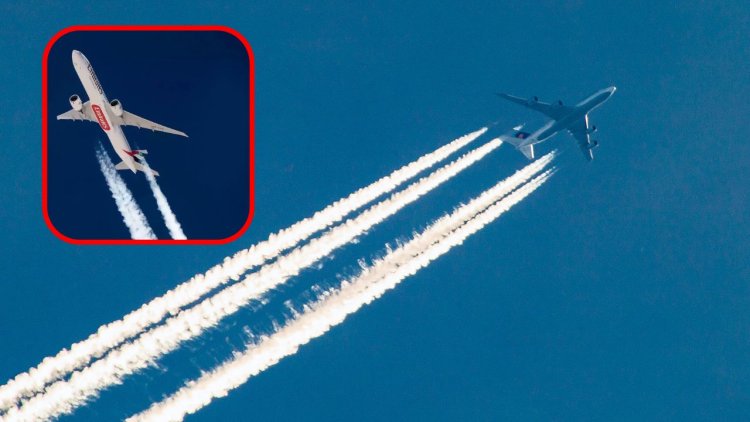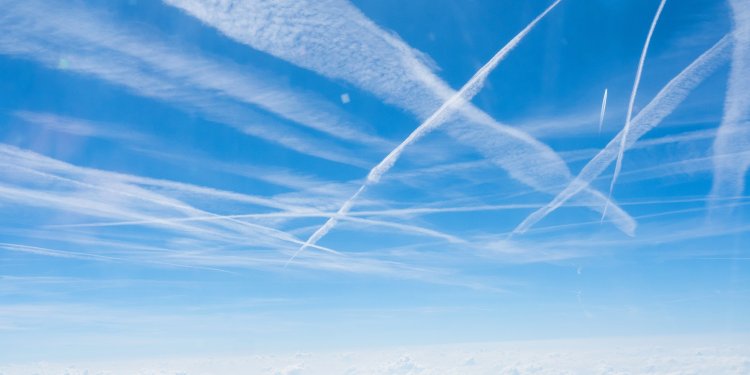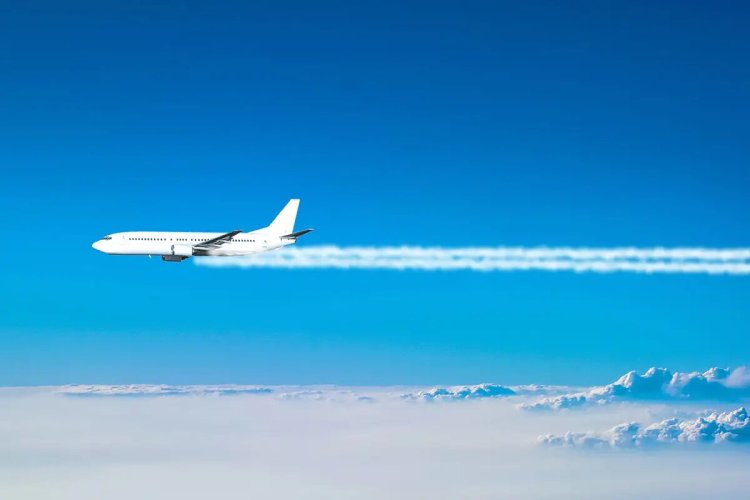What Really Makes Up White Trail 'Smoke' Left By Jets In The Sky
Some believe that the trail was a move by the planes creating a pathway not to be interfered with by another plane to avoid mid-air collisions.

Anytime you lazily look up in the sky, while you are daydreaming, you are likely to notice some white 'smoke' trails left by commercial aircraft during or after it flies by in the sky.
Depending on what part of the country you are in, you will have noticed a jet flying over and leaving a trail of smoke, more commonly passenger jets that are travelling at a long distance between continents and oceans.
Some believe that the trail was a move by the planes creating a pathway not to be interfered with by another plane to avoid mid-air collisions.
Viral Tea takes a look at the thin white lines that almost look like a plane creating its own clouds:
What Are The White Lines?
The lines are referred to as contrails, which are short for condensation trails. Jets thus leave behind white trails or contrails in their wake during a flight in the same technique you puff out smoke anytime you smoke a cigarette or sheesha.

An image of contrails over the skies of Germany. /MET OFFICE
The water vapour present in the jet exhaust condenses and could freeze. This combination process forms a cloud comparable to the one your hot breath forms on a cold day.
Contrails are long, condensed trails that are visible in the upper atmosphere behind jet engines. They are composed of ice particles that form in the exhaust of an aircraft when flying in a narrow range of altitudes in the upper atmosphere, several kilometres above the ground.
Since the beginning of jet aviation, they have been a common occurrence, but their duration and size vary almost entirely on the temperature and humidity of the air at the plane's altitude. The water content in persistent contrails mainly comes from the atmosphere, but it also comes from the exhaust of the plane.
How Are Contrails Formed?
The creation of contrail ice crystals begins with minuscule particles made from soot or other materials generated by aircraft exhaust. This process involves the coalescence of a few dozen to several hundred molecules, which then combine to form more substantial particles.
The surfaces of these particles are made of sulfates and nitrates. Their growth is enabled by the presence of water vapour in the exhaust gases and ambient relative humidity greater than 100%.
Unlike those clouds that form naturally and without any human intervention, contrails are a result of the exhaust from planes. They are generally made up of ice particles, as opposed to normal clouds, which are usually composed of liquid droplets.
Furthermore, these clouds can only take shape at very high altitudes where the temperature is very low, whereas natural clouds can form at different heights, ranging from the ground (fog) up to the sky (cirrus clouds).
Types Of Contrails
Three distinct types of contrails exist, but all of them are composed of the same two components and are generated in the same way. The difference between them lies in the persistence of the contrail.
Short-Lived Contrails, for example, appear as brief white streaks in the wake of the aircraft and soon vanish practically as soon as the plane passes across the sky. Usually, these kinds of contrails last a few minutes at most before water vapour reverts to a gas, but in this case, the air mass that the plane flies through is quite dry, with only a tiny amount of water vapour creating the contrail.
Non-spreading persistent contrails are visible as long white lines that stay behind after the plane has passed by. For this kind of contrail to form, there must be a humid and damp atmosphere with a lot of water vapour or nuclei.
Because of the added moisture, the ice needs far more time to melt, which makes the contrail visible for up to an hour after the aircraft has left.
The process of forming persistent contrails is similar to the non-spreading type. However, the diffusion of thick contrail streaks is caused by an unsteady or turbulent atmosphere, resulting in distribution over a wider area, which gives them an aspect more like that of a cloud.
How long do they stay in the sky?
Thermodynamics dictates the formation of contrails, which can be explained by a mathematical equation that considers the temperature and pressure of the atmosphere, the humidity, the water content in the exhaust, and other variables. When the relative humidity exceeds 100%, the contrails can last for several minutes to hours, forming elongated narrow trails in the sky.
Occasionally, the jets will expand both vertically and horizontally due to turbulent air in the atmosphere - covering a wider area in the sky, but this is dependent on the amount of water vapour available at cruising altitude. This produces cirrus clouds composed of ice particles that may last for several hours, similar to normal cirrus clouds.

An image of a plane flying over the clouds and leaving behind contrails. /GETTY IMAGES
The presence of contrails in the atmosphere is expected to change if any of the factors that influence their formation and duration are altered. These crucial elements include the type of engines used in aircraft, the level and position of air traffic, and the humidity levels in the background atmosphere.
For instance, if fuel efficiency is improved, this could cause changes in the heat and amount of water released in the exhaust, which in turn, could influence the frequency and extent of contrails. Alterations in air traffic may also impact persistent contrail formation.
It is worth it to note that just because contrails are mainly composed of pure water, and the fact that jet liners leave them behind, they are not dangerous. Jet fuel is also highly refined to remove as many contaminants as possible.
From small single-engine aeroplanes to large four-engine aeroplanes, all jet-engine aeroplanes produce white smoke, which doesn't stay in the sky forever.
So the next time you happen to see a plane flying over across the sky and leaving that white smoke, it is leaving contrails and those are normal.

 admin
admin 




